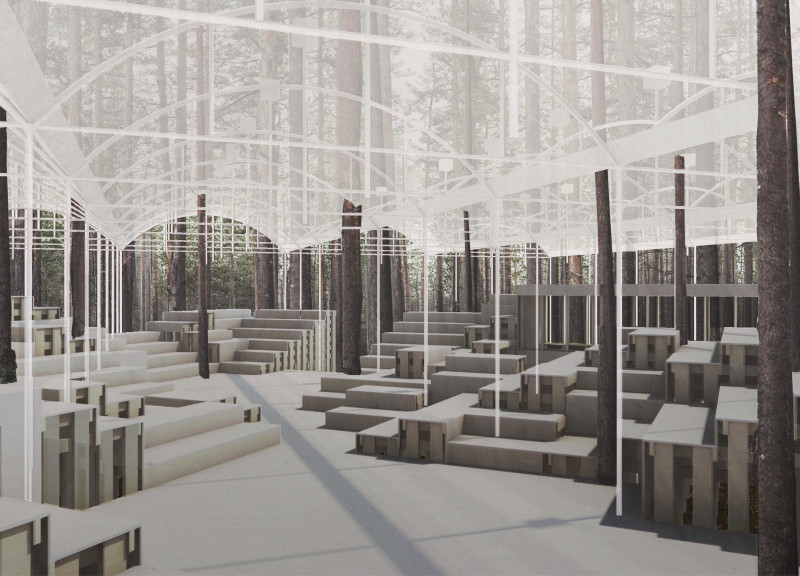5 key facts about this project
Upon entering the building, visitors encounter an expansive lobby that establishes a welcoming atmosphere. This space is characterized by high ceilings and ample natural light, achieved through large glass panels that facilitate a seamless connection between the interior and exterior. The use of glass not only enhances visibility but creates a fluid transition, allowing the surrounding urban environment to inform the interior experience. The lobby serves not just as a passage but as a gathering area, encouraging social interaction among users and visitors alike.
The project's design thoughtfully integrates common areas that promote collaboration and community building. These spaces are strategically positioned within the layout to invite informal meetings and casual exchanges. The architectural design incorporates flexible zones that can be adapted for various activities, from workshops to community events, which reflects forward-thinking ideas in urban design. By promoting multifunctionality within the building, the architects have increased its utility while enhancing community life.
Private spaces within the project are designed with an understanding of the balance between openness and intimacy. Rooms and offices are oriented in a manner that maximizes privacy while maintaining visual connections to central shared areas. This approach respects the needs of users seeking quiet, personal space, thereby fostering a conducive working environment. The separation of public and private functions is achieved through careful spatial planning, ensuring that each area serves its purpose effectively.
Materiality is another fundamental aspect of the design, with a deliberate choice of materials that support the project’s sustainable ethos. Reinforced concrete serves as a major structural component, providing both durability and thermal mass. Alongside concrete, the integration of lighter materials like steel helps to reduce the overall weight of the structure while allowing for expansive openings that bring in light. The thoughtful application of wood and stone in the interior adds warmth and texture, establishing a sense of comfort and connection to nature. These materials were selected not only for their functional benefits but also for their ability to resonate with the local context, enhancing the building's integration into its surroundings.
One of the unique design approaches evident in the project is the incorporation of green technology. The building features a green roof system that not only aids in insulation but also contributes to stormwater management and urban biodiversity. The architects employed passive design strategies that ensure optimal energy efficiency, which significantly reduces the project's ecological footprint. Solar panels strategically placed on the roof add a renewable energy component, demonstrating a commitment to sustainable practice that aligns with contemporary architectural trends.
The project also emphasizes cultural sensitivity, reflecting the character and identity of the local community. Architectural details reference regional styles and motifs, creating a dialogue between the new structure and its historical context. This thoughtful integration of local culture not only enriches the design but also helps create a sense of belonging for the community it serves.
As you explore the project further, consider delving into architectural plans, sections, and various design elements to fully appreciate the intricacies of this architectural endeavor. The interplay of innovative design ideas and functional applications culminates in a project that stands as a valuable asset within its urban setting. For a deeper understanding of this project, review its architectural designs and thoughtful approaches, revealing the comprehensive vision that drove its creation.


























